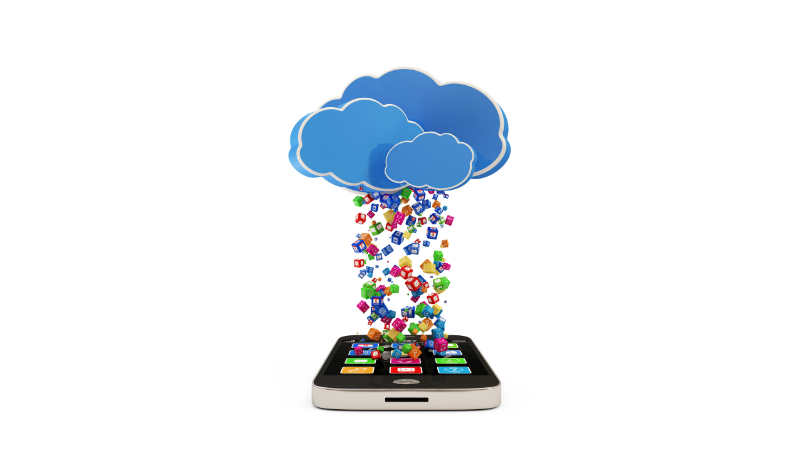Every business needs a seamless, fast, and good user experience for customers. There are different options available, but businesses are unsure which app development is more effective in boosting growth and user experience. Progressive web app development and native app development have different options and features, and both have different costs according to customizations and features.
In this guide, we will explore what a PWA is, progressive web apps vs native apps, and the cost of both app development, and also discuss which app development is best to meet your business needs and goals.

What is a PWA?
A progressive web that web application that works like a mobile-based app. It works with different features, like you can access online, receive push notifications, and have a home screen icon. It is a very reliable, fast, and engaging web application. There are some examples of progressive web apps, like Pinterest, Twitter, that offer a better user experience and engage customers.

What is a Native App?
A native app is a software-based application development that we create for Android and iOS. These apps users can download directly from the Play Store and App Store on their devices. In these types of apps, businesses can offer to use the GPS, camera access, and notification features.WhatsApp, Instagram, and Spotify are some examples of native apps.

Progressive Web Apps vs Native Apps: Key Differences
Here is a progressive web app vs native, and key differences of development cost, features, and performance:
Platform & Installation
Here is PWA vs native in the platform and installation process:
Progressive Web Apps (PWAs):
PWA is a web application that works on a web browser, but you can you on your mobile device home screen. It makes the onboarding process quick and reliable. PWA apps work on different web browsers with mobile-friendly features.
Native Apps:
Native apps are especially designed for iOS and Android so users can download them directly. Native apps provide you with the best performance and security, and different features like GPS, camera access.
Performance & Speed
Here is a native mobile app vs a web app in performance and speed:
PWA:
PWA offers you the best performance on web browsers. It quickly loads and works on low-quality networks, and it provides you with a very seamless and responsive experience. But it may be slow to perform the heavy processing and advanced graphics.
Native App:
Native apps provide you the high responsiveness and are optimized for iOS and Android. It can handle the advanced animations and is very responsive in large datasets, and works more smoothly than PWA with advanced features.
Development & Maintenance Cost
Here is the cost of native vs progressive web apps:
PWA:
PWA is a very cost-effective web-based application development. If you need a codebase that works on different devices and platforms, fast and affordable. You can maintain and update these applications in very simple ways and without the need to manage different versions.
Native App:
In a Native app, you have to build and design separate versions for iOS and Android. In this way, it increases the cost of ongoing maintenance. It can also be expensive if customizations to customers’ demands.
Reach & Accessibility
Here is progressive apps vs native in React and accessibility:
PWA:
PWA is the best choice; it can be reached and accessed quickly on any device with a browser. It is faster in launch with fewer limitations.
Native App:
Native apps can be accessed and downloaded directly from app stores and the Play Store. It can increase visibility and credibility.
User Experience
Here is a native application vs a web application in user experience:
PWA:
Progressive web apps provide you with a smooth experience and work on different devices and browsers. PWA supports push notifications and offers some offline functionality and shortcuts for the home screen.
Native App:
Native apps provide you with the best user experience with integration of the operating system. It offers fast user response and different features with refined designs and interactions.
Updates & Maintenance
PWA:
PWAs update automatically in the background. Users always access the latest version when they open the app, eliminating the need for manual updates.
Native App:
Updating a native app requires submitting the new version to app stores and waiting for users to download it. This process can take time and may cause delays in rolling out important features or fixes.
Pros & Cons at a Glance
| Feature | Progressive Web App | Native App |
| Cost | Lower | Higher |
| Performance | Good | Excellent |
| Device Features | Limited | Full Access |
| Offline Functionality | Yes | Yes |
| User Experience | Great | Best |
| Discovery | Via browser | App store |
Native vs Web Applications: Which is Better?
A web app (like a PWA) is a website that looks and feels like an app. People don’t need to download it; they just open it in their browser. It works on all devices, costs less to build, and is easy to update. Web apps are a good choice if you want to reach more people quickly and don’t need advanced phone features. A native app is made just for one type of device, like an iPhone or an Android phone. People download it from an app store. Native apps work faster, look more polished, and can use all the phone’s features like the camera, GPS, or even offline storage. But they cost more to develop and take longer to build because you need a separate app for each platform. At Cubixsol, we build both progressive web apps (PWAs) and native mobile apps tailored to your business needs.
Conclusion:
Choosing between a progressive custom web app and vs native app depends on your business goals, budget, and target audience. If you aim for a broad reach and quicker development at a lower cost, a PWA is a smart choice. If your app needs advanced features and you can invest more in development, a native app is ideal. Whether you choose a web app vs a native app, ensure it aligns with your users’ needs and your business objectives.
Related Blog: The App Development Lifecycle: From Idea to Launch

